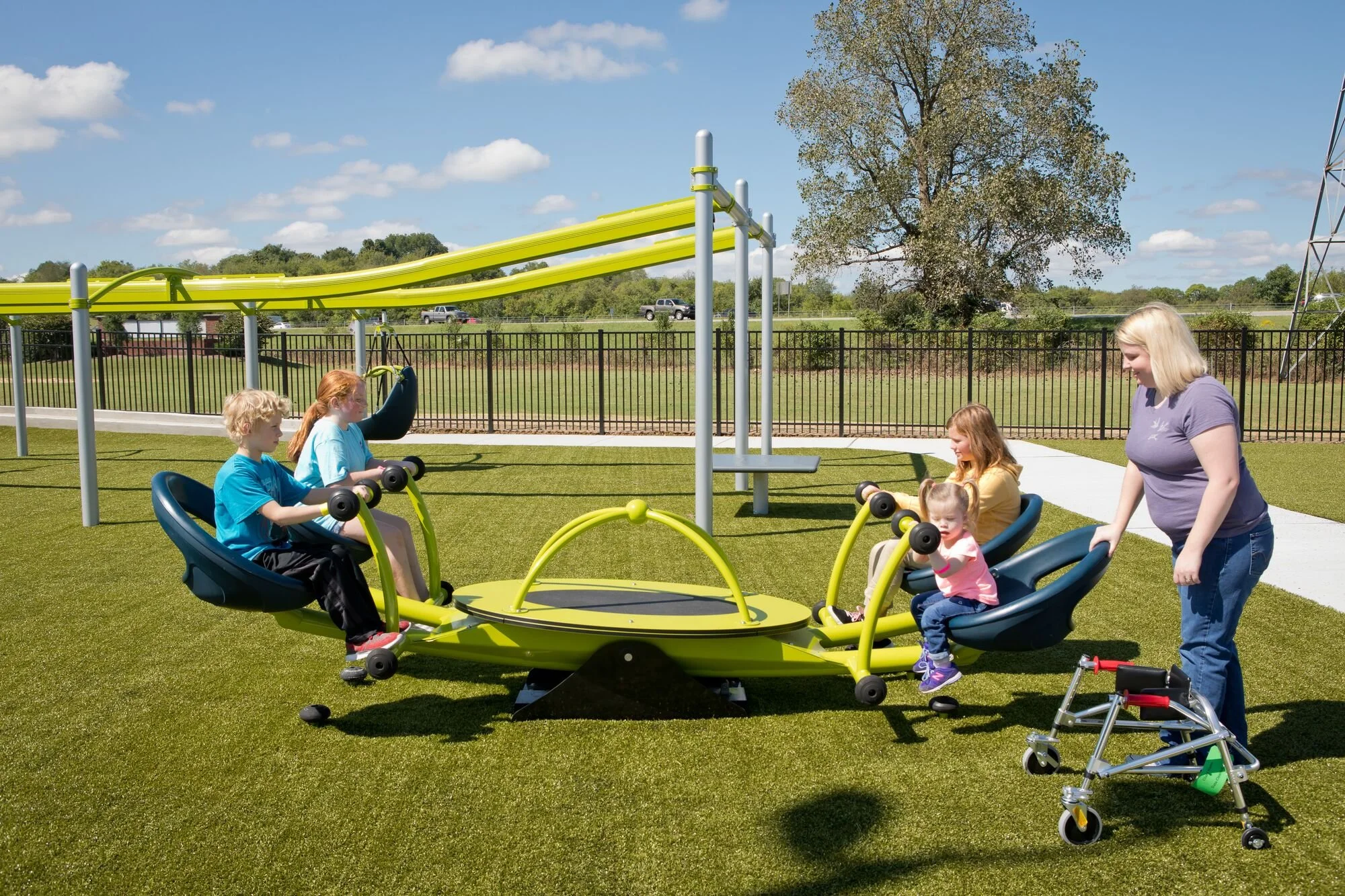
What does an INCLUSIVE or Accessible playground mean?
Different kids, different needs
-

Unitary Surfacing
Playgrounds should be designed so that students with mobility or balance challenges, such as students who use a wheelchair, a walker, wear Ankle Foot Orthotics (AFOs), or have an unsteady gait can more easily and independently explore the play space. Using poured-in-place surfacing, tiles, or turf are elements that are solid and continuous, providing a stable and uniform play area.
-

Social integration
It is important to provide a space where children of all abilities can play, learn, and interact together. It helps foster understanding, empathy, and teamwork by supporting all of our children to interact with their peers in a safe and supportive environment.
Inclusive playgrounds that include social integration elements foster a sense of belonging and community for children and families alike, reinforcing the idea that everyone deserves equal opportunities to play and thrive.
-

Emotional and Cognitive Growth
The opportunity to engage in free play, take risks, and make choices on the playground promotes emotional regulation, problem-solving, and cognitive growth. Play is crucial for children’s development and individuals should be able to access the part of the playground that interests them the most.
-

Multi-Sensory Play
Sensory play is play that activates and engages the five senses (touch, sight, hearing, smell and taste) and is a fantastic tool for inclusive experiences. Sensory play is exciting and fun, and it’s rooted in neuroscience and supports how children process and respond to the world around them. Through engaging in sensory play, children build nerve connections in the pathways of their brain. This lends to the development of language and motor skills.
EXAMPLES:
Tactile panels
Sound elements
Visual engagements
Movement
Quiet play for regulation and decompression -

Vestibular play
Playground free-play stimulates the vestibular system. The vestibular system, located in the inner ear, is responsible for balance and coordination. Students with physical mobility issues should be able to access specialized equipment that features a motion activity with their friends without having to transfer out of their wheelchair. Students need to be able to experience sensory-rich feedback that provides vestibular feedback which is important for balance and understanding of where the body is in relation to the earth.
-

Communication Growth
By engaging the body and mind together with motor activities, we can enhance overall cognitive development, communication skills, and critical thinking skills for children. Motor play and interactive play helps children build vocabulary, listening, and social skills.
Some individuals have language impairments. Playground communication boards are an effective way to allow children of all abilities to communicate and promote public awareness of Augmentative and Alternative Communication (AAC).
